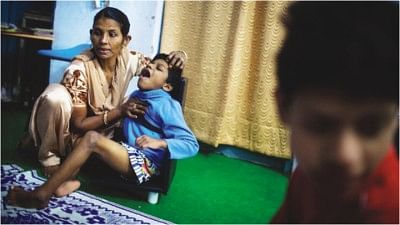Campaign against Epilepsy and its stigma

Photo: Getty Images
Epilepsy, a disorder of brain characterised by recurrent seizures affects people of all ages. Around 50 million people worldwide are affected and nearly 90 percent of the people with epilepsy are found in developing countries like Bangladesh. Although most cases of epilepsy respond to simple and inexpensive treatment, statistics from World Health Organisation (WHO) suggests that about three fourths of affected people in this region do not get the treatment they need.
Experts identified lack of awareness, widespread myths, social stigma and attitude, lack of counselling to continue long term treatment are the major obstacles fighting epilepsy. They urge to start campaign to ease stigma and convulsion associated with epilepsy.
In most cases, the cause of epilepsy is unknown. In other cases, the causes could be brain damage from a loss of oxygen or trauma during birth, a severe blow to the head, a stroke that starves the brain of oxygen, an infection of the brain such as meningitis, or a brain tumor. Seizures or convulsions in epilepsy vary from person to person.
In many rural parts of Bangladesh, epilepsy has being recognised as demonic phenomenon rather than a disease for long time. It has been reported that people with epilepsy living in rural parts are usually taken to traditional/religious/faith healers where the treatment is aimed at driving out the demons thought to cause epilepsy. These healers treat people in different inhuman manners — beating by whip, burning, inhaling fumes and feeding herbs, mud or even human faeces.
Stigma surrounding epilepsy start from early childhood and then gradually affects almost every area of life — education, living status, social participation, employment, marriage and motherhood etc. Many children with epilepsy drop out of school once their condition is discovered. Many people have been fired for having a seizure in the workplace.
Still, a wide segment of people, especially in rural part view epilepsy as a reason for prohibiting or annulling marriages. Many people often shun them for fear that they are contagious, or possessed. People with epilepsy are often excluded from social activities and kept aside. Hence, they are less likely identified and have reduced access to healthcare facility available.
All these factors create a huge treatment gaps. These gaps are driven largely by low income, rural location, limited resources. However, gaps can be minimised by cost-effective strategy and nationwide awareness campaign.
Statistics from WHO show that up to 70 percent of newly diagnosed children and adults with epilepsy can be successfully treated with anti-epileptic drugs for about $2 a month. After two to five years of successful treatment, drugs can be withdrawn in about 70 percent of children and 60 percent of adults without relapses. There are other options like surgical therapy that might be beneficial to patients who respond poorly to drug treatments.
Like other diseases, epilepsy is just an illness that is treatable and anyone can get affected. A campaign to increase awareness, to provide better information and increase access to treatment are crucial to combat epilepsy.

 For all latest news, follow The Daily Star's Google News channel.
For all latest news, follow The Daily Star's Google News channel. 



Comments